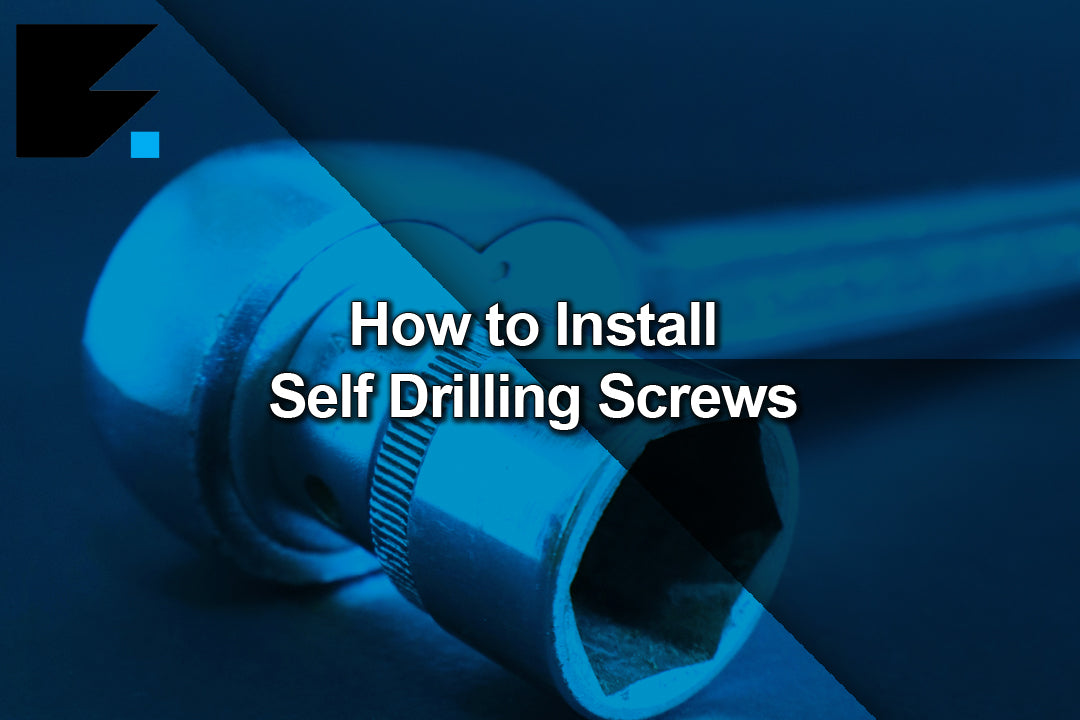Stainless steel self-drilling screws are a favourite among tradespeople for good reason: they’re strong, rust-resistant, and save time by eliminating the need for a pilot hole.
But to get the best results, it’s important to follow a few key installation principles.
In this guide, we’ll walk you through how to use stainless steel self drilling screws step by step, along with best practices and common mistakes to avoid.
What Are Self Drilling Screws?
Before we dive in, a quick refresher.
Self-drilling screws, (often called Tek screws), feature a drill-like tip that cuts through thin metal or timber while tapping a thread in one motion. Made from A2 stainless steel, they’re ideal for outdoor metalwork, cladding, HVAC (heating, ventilation and air conditioning) installations, and any job where corrosion resistance matters.
Step-by-Step Guide to Installing Self Drilling Screws in Metal
1. Choose the Right Screw for the Job
- Material: Use A2 stainless steel for general outdoor or damp conditions.
- Diameter: Common sizes include 4.8mm, 5.5mm, and 6.3mm. Choose based on the material thickness and required holding strength.
- Length: Make sure the screw is long enough to pass through all materials with at least 3 threads exposed on the far side (if applicable).
- For structural steel or thick profiles, consider a larger diameter and length for better grip.
2. Check the Drill Point Capacity
The drill point on stainless self-drilling screws is typically suitable for steel up to 2.5 to 3mm thick. Trying to drive into thicker material may cause the tip to dull or snap.
Pro tip: If you’re unsure, drill a small test hole in scrap material to confirm the screw’s suitability.
3. Use the Right Tools
- Driver: Use a cordless drill or impact driver with adjustable torque.
- Bit: Match the bit type to the screw head (e.g. hex socket for DIN 7504K hex head screws).
- Speed: Use moderate drill speed, too fast and you risk overheating the tip; too slow and it may stall.
4. Mark and Align
Measure and mark where each screw will go. For clean, flush results, ensure the materials are clamped or held firmly in place. Alignment matters more than you think, especially with metal-to-metal fixings.
5. Drive Smoothly and Steadily
- Hold the drill perpendicular to the surface.
- Apply firm pressure and let the screw do the work, no need to lean in too hard.
- You’ll feel the screw break through and then bite; continue until the head is flush.
- Avoid stopping halfway, which can burn out the tip or cause it to seize.
6. Finish Neatly
Stop once the screw head is snug against the surface. Overtightening can cause damage or strip the threads, especially in softer materials.
Common Mistakes to Avoid
- Using the wrong screw type - Not all self-drillers are created equal. Stainless steel is great for corrosion resistance, but not for drilling into thick or hardened steel so use bi-metal screws for that.
- Over-speeding - Running the drill too fast can overheat the screw tip and ruin its cutting ability.
- Overtightening - This can cause snapping, stripping, or damage to the workpiece, especially on thin sheets.
- Misalignment - Driving at an angle weakens the fixing and may damage the material.
Self Drilling Screw Installation Tips
- Store screws in a dry place to prevent tea-staining on stainless surfaces
- Use consistent pressure for a clean finish
- Remove the screw and re-drive only if absolutely necessary
- For curved or uneven surfaces, pre-align with clamps to reduce wobble
Summary
When installed correctly, stainless steel self-drilling screws offer a fast, secure, and weather-resistant fixing. By following these steps and avoiding the common pitfalls, you’ll get cleaner results, longer-lasting joints, and fewer stripped screws.
Whether you're working on metal cladding, steel framing, or outdoor joinery, proper installation is key to performance.
Need trade-quality stainless self-drillers?
Explore our full range in stock now at Fixabolt® or learn more about self-drilling screws here.

